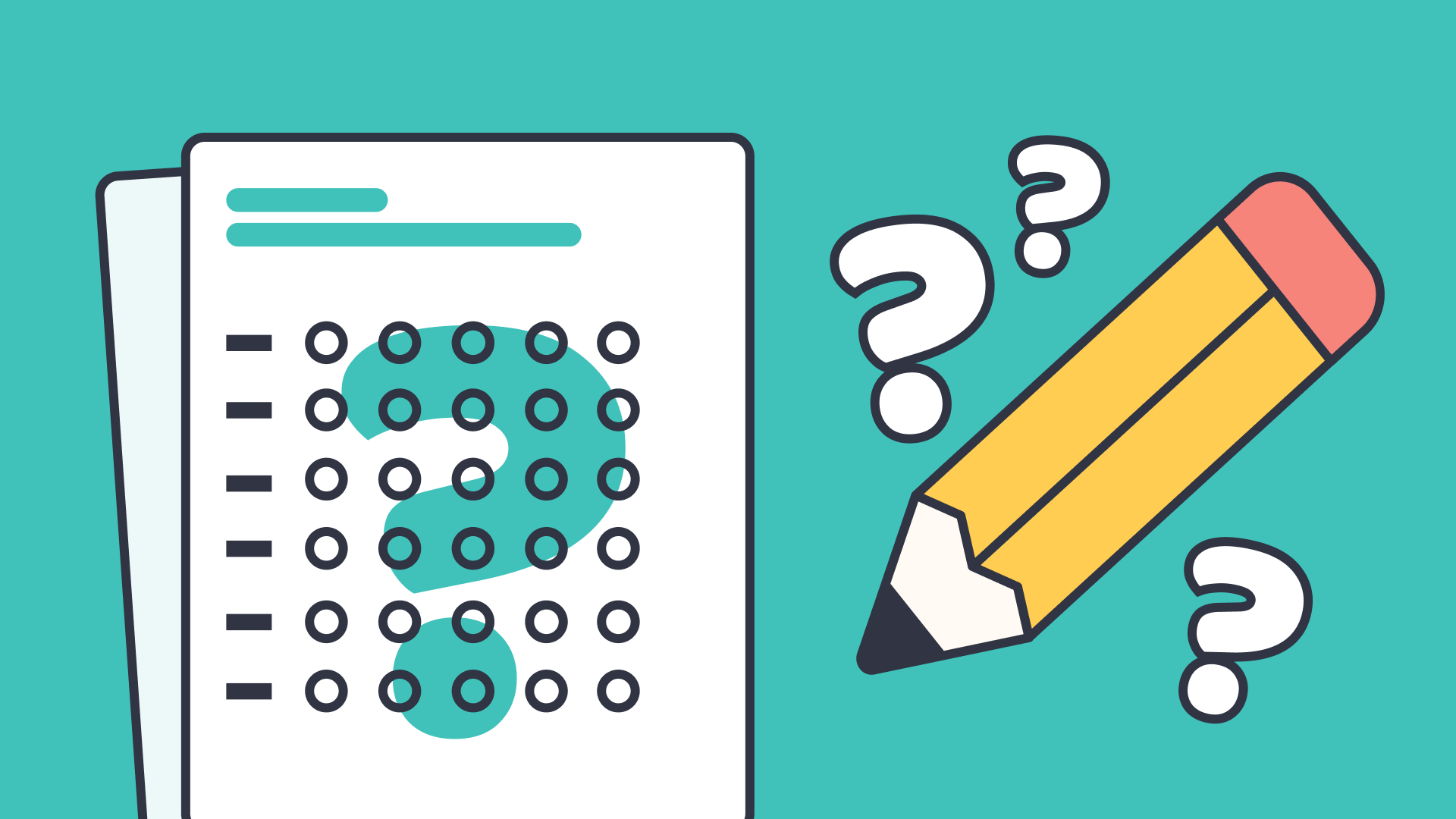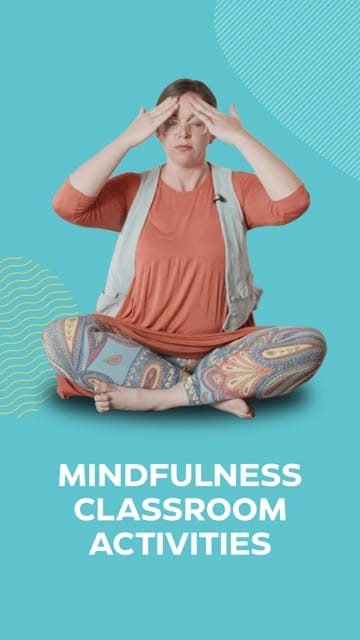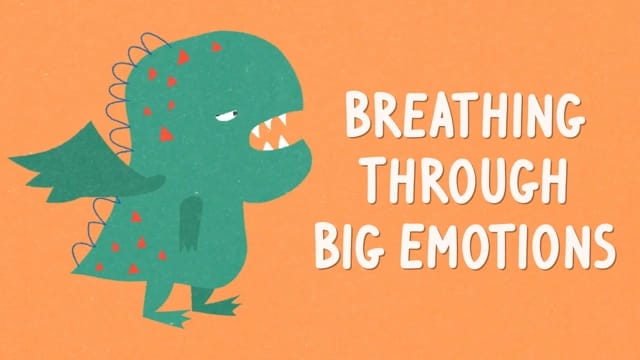9 Teacher tips for overcoming student test anxiety
In this guide
Effects of test anxiety on students
We have all experienced worrying thoughts or experienced anxiety. These are normal human emotions, especially if we’re in a scenario that is challenging, scary or uncertain. Sometimes, however, that anxiety is overwhelming and can feel hard, or even impossible, to navigate.
That can be the case for some students when they are preparing for a test. Test anxiety is a real issue, especially if the test is high stakes (end-of-year exams, mocks and GCSEs/National 5s) or they are experiencing external pressures from parents and educators.
It is guaranteed that teachers will encounter students who suffer from test anxiety, no matter the year group. I have created a list of strategies (arranged by school level) that can assist them through these challenging situations.
Test anxiety strategies: primary
As students begin their first years of schooling, they soon encounter tests. Parents and teachers begin to talk about tests and the importance that is attached to getting the answers right. Test anxiety may begin.
Even as early as Reception, kids start to experience “assessments” (such as weekly spelling tests or even something as simple as the teacher calling on them for answers in front of the class) and students are introduced to the weight of performance pressure.
Some people flourish in a high-stress environment, whilst others internally or externally struggle.
Here are some strategies that you can use to help students with test anxiety.
1) Mindfulness
In my experience, it is important that students begin learning about mindfulness early. This is a great chance to talk to your students about being aware of how they feel, and how they can shape and influence their own mindset about life situations.
Here’s a great place to start, when introducing mindfulness to your class: Mindfulness.
This is a great opportunity for them to recognise and identify what they’re thinking and feeling. To normalise their feelings and behaviour and begin learning strategies to cope with these big emotions that can be overwhelming. We can teach them this through understanding how their brain and body work together, and how to reflect on these emotions.
The earlier students are exposed to the concept of mindfulness, the more natural it will be for them to identify their thoughts and emotions, and perhaps alter their mindset–most importantly when they are under duress.
ClickView has a brilliant collection of videos providing classroom activities to practise mindfulness: Mindfulness Classroom Activities. These could be done at the beginning of the lesson, before an exam or important assessment, perhaps after break time, or even at the end of the day.
2) Yoga and relaxation

As a test is approaching on the calendar, you may start to feel the mood and mentality of the students in your class shifting. This could be a great opportunity to not only talk through how they’re feeling but also to teach them how to use their bodies to relax their minds.
One way to do this is through engaging in regular relaxation techniques, like sending signals to the body that it does not need to be tense and rigid. If the body is relaxed, it’s far more likely the brain will also relax. Have you tried The Koeppen Technique: Relaxation for Kids? It provides simple videos that can be used in your classroom environment. Try making it a regular part of your morning routine, or after lunch to help students settle more readily into class. It might take 5 minutes of your teaching time but will allow you to have focused, engaged and brain-ready students for the rest of the time.
Yoga for Kids is also an excellent way of settling dysregulated students and providing regular physical and mental health support in your classroom. There are simple activities that you can do with your students, to help them release stress and anxiety. They can even be done outside!
Try using it as a treat or as a way of splitting long lessons, allowing unengaged students to burn off some steam and return ready to take on more information. It’s also better for your stress and anxiety levels rather than battling students!
3) Breathing
I don’t know about you, but when I’m feeling stressed, anxious or overwhelmed, sometimes I just need to remind myself to breathe. It’s a simple, automatic thing that your body does all the time, but when we’re tense, we tend to forget how to breathe properly.
This applies to students just as much as adults. They can get so caught up in their stress and anxiety, that they may not be getting enough oxygen. It’s important that we make them aware of this, give them tools to be mindful of their breathing, and teach them a variety of different breathing techniques to calm themselves down when needed.
This starts with slowing down and paying attention to your body. Do a quick body scan, then, take nice, slow, deep breaths. This will require focus and awareness.
This video demonstrates different breathing strategies, which can help assist students in sending messages to their brain to calm their bodies: Miniclips: My Body and Brain Working Together: Calm Breathing.
And this video shows students how to breathe through their strong feelings when situations feel too big: Miniclips: Meditation: Dragon Breaths for Big Emotions.
4) Encouraging notes

One technique that I have used to help students feel a little more at ease during a serious test, is to leave encouraging notes on their desks. This way, they have a little positive moment, right before they have to take the test, and it’s there in their hands during moments of panic during the event itself.
Here’s how I did this:
- Using sticky notes, I wrote out personalised messages for each student (ex: “Brandon, you’re going to do great today!”)
- If there were multiple days of testing (ex: state testing), I made notes for each day.
- Before the students arrived that morning (or if the test was later in the day, perhaps during break time or their special class like Library, etc.), I went around and placed the notes on each of their desks.
I saw the smiles and surprise on their faces as they walked into the room. I could tell that it meant a lot to them, and gave them a little extra boost. And I’m sure for some of them, this was the only encouragement they would get for this test.
So, it was worth my time and effort. They had that sitting there on their desks, reminding them that I was cheering for them and had confidence in each and every one of them.
5) Music
Music has been linked to increased productivity, improved memory and enhanced learning. The correlation between music and learning has been studied for a long time and no matter how music helps students enhance learning, by including this in practice you are giving young students another tool in their mental health toolbox. One that they can use for life.
So, it makes sense that it could also be helpful for test anxiety. Whether you have music playing as kids enter the room that day, or if you’re able to play quiet, lyricless music while they’re actually testing, it can be a great tool for easing stressed minds.
I have found that classical music or even instrumental versions of popular songs work best. Sometimes songs with actual words can distract some students from concentrating, which would have the opposite effect.
Depending on the type of test you are administering, you may not be allowed to play music during the actual assessment (for example, there are strict rules and protocols for state testing). But, you could certainly have music playing prior to the start of the test. And hey, even after it’s over- let’s celebrate and dance the worries away!
Test anxiety strategies: secondary school
Once students enter the secondary school years, testing and testing conditions tend to become more intense and stressful. Especially at upper secondary school level.
So, students need to understand test anxiety, be able to identify their emotions and have tools for what to do if they encounter it. Although some of the strategies listed above most certainly could apply to the older year groups, here are some more suggestions:
6) Mindfulness and anxiety

Like in primary school, students may need guidance and direction on mindfulness. As they get older, it can be especially hard for children to regulate and identify their feelings and emotions, particularly when hormone changes begin to kick in!
It’s important that teachers keep an open dialogue with students – just in general – so they know that they can talk to you about the state of their mental health.
These videos suggest ways to lead students to reflect on mindfulness and change their mindset towards mental health and anxiety:
- Understanding Wellbeing for Students: Don’t Put Too Much Pressure on Yourself
- State of Disruption: Hacking Happiness
- What You Need to Succeed: A Growth Mindset
And when it comes to test anxiety, it could be helpful for students to be provided with information and the opportunity to reflect on these feelings.
Begin with the basics- Understanding Anxiety: What is Anxiety? introducing the concept of anxiety to your students, normalising the state and allowing students to understand how their bodies and minds can respond to the chemical changes in their bodies.
By secondary school, students will need to understand and manage anxiety and exam stress. This can be an extremely stressful period in young people’s lives and it is imperative that students are given the tools and skills necessary to navigate this time in their lives.
I believe that just giving your students a safe place to navigate and reflect on these feelings can go a long way. It could help them feel more at ease with these emotions, and, ideally, eliminate them altogether.
7) Study buddies

You might call this something else, but the basic concept is providing students a chance to work in partners or small groups to prepare for their exams. This can help them learn from others, gain previously unlearned tips and tricks, and brainstorm together.
If it’s for a test that is specific to your class, providing a study guide or some sort of general guideline of what to study is imperative. There’s nothing more frustrating than someone who studies for hours, looking through every page in a textbook and/or every set of notes they have taken, only to realise that they didn’t need half of that information for the test.
If possible, I always tried to provide class time for study buddies. Depending on the intensity of the exam, I may offer several class periods where students can work together and review the material. This will need to be monitored of course, but can be very beneficial.
Students can quiz or test each other in a more structured manner. Perhaps have practice questions that they can ask their buddies. Or they can make flashcards with a term on one side and the definition on the other.
This could also look like a group activity, where the teacher turns the review process into a game. I have made Jeopardy or other quiz games, where groups compete to get the most practice questions right.
No matter how you structure it, students can utilise the concept of their peers to practise and share strategies and knowledge in preparation for their tests and assessments.
8) Stretching
As with primary and secondary, students may benefit from physical movement to release stress.
Simple stretches can get the blood flowing, and move the brain into the right space to focus and prepare to do something difficult, like taking a test.
Just like with the yoga suggestions for primary, these activities can be done in the classroom or outside. They only take a few minutes but could make a big difference in how students feel before a test.
Try Essential Skills for Sports: Running: Stretch Exercises (Beginner).
9) Music
This is the same as primary school. Music is a great tool for concentration, brain function and relaxation. I highly recommend trying to incorporate music as much as you can, whenever you can. You might be surprised at its effectiveness.
Acknowledging and supporting
No matter the age, students often suffer from test anxiety. Whether it’s the pressure they receive from home or within themselves, it’s real and palpable. It will present differently in every student; rarely will they say the words ‘I’m stressed’, but it’s our job to interpret their behaviours and teach them to navigate their own emotions.
It’s our job as the teacher to help students know their own mind and bodies, respond to changes in their moods and upskill them as much as possible so that they have a range of strategies and tools to help them navigate test anxiety.
The key is to keep communication lines open, recognise they may be feeling anxious, and offer tools to support students no matter their age.

Rebecca Robison
briefcase iconEducational Consultant/Middle School Teacher
Rebecca Robison is a former teacher with over 20 years of experience, ranging from 1st grade to 8th grade, and in multiple subjects. She retired from teaching in 2023, and has been working for ClickView ever since as an Educational Consultant and Blogger.
Other posts
Want more content like this?
Subscribe for blog updates, monthly video releases, trending topics, and exclusive content delivered straight to your inbox.
















